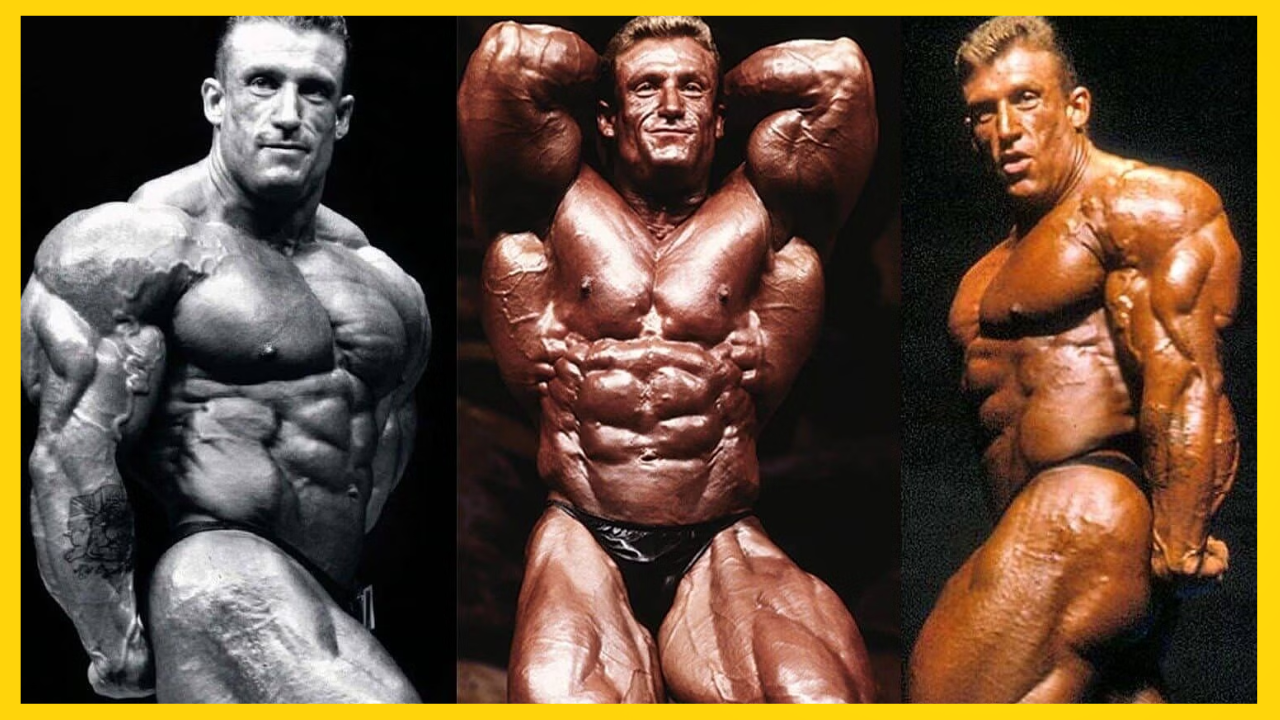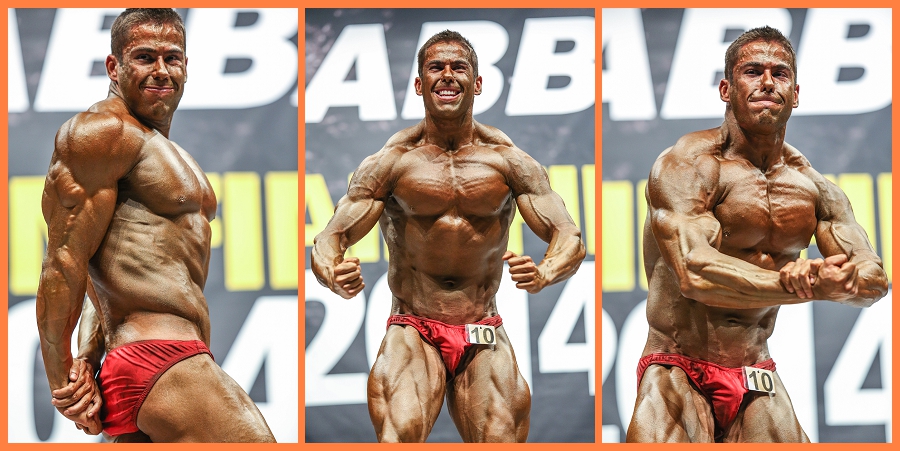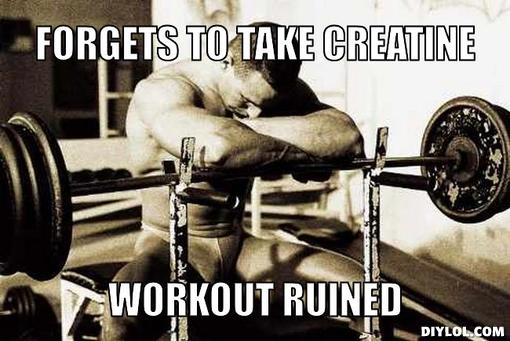Are bodybuilders strong? I thought I’d answer this as someone who has competed in bodybuilding shows for 10 years and won the NABBA Mr Britain Title.
Yes – bodybuilders are strong. They are stronger than your average gym goer, and definitely stronger than the average person. BUT – they aren’t the strongest gym goers out there.
Which is why this question gets brought up alot. Bodybuilders train primarily for looks, otherwise known as “aesthetics”. This kind of training doesn’t just focus on building strength.
BUT – to build muscle, you need to get stronger.
Just how strong are bodybuilders? By the end of this post, you’ll know.

What is “strong”
When you think of strength, what do you picture? Most likely, a jacked up bodybuilder, hoisting a massive weight above their head. But what does it really mean to be strong?
There are actually several different types of strength, each with its own definition and way of being measured.
One of the most common types of strength is maximal strength, which refers to the greatest amount of force a muscle or group of muscles can generate in a single effort. This type of strength is often tested through exercises like the one-rep max bench press or squat. If you’ve ever seen weight lifting on the olympics (who hasn’t) you’ve witnessed athletes demonstrating their maximal strength.
Another type of strength is power, which combines strength and speed. This is the ability to move a heavy weight quickly. Think back to new years day, watching World’s Strongest Man.
Muscular endurance is yet another type of strength, and it refers to the ability to sustain muscular contractions over an extended period of time. This type of strength is often tested through activities like running, cycling, or swimming.

Strength is relative
Each type of strength has its own unique benefits and challenges, and each can be developed through specific training methods. But no matter what type of strength you’re working on, it’s important to remember that strength is a relative measure.
What might be considered strong for one person may not be for another, and that’s okay. I remember being called strong when I was in my early 20’s. I trained more like a powerlifter back then, and could deadlift 220kg at the age of 21. Now, aged 32, this is just a ‘meh’ weight. But back then – I was strong.
What matters most is setting and achieving your own personal goals and celebrating your progress along the way.
How a bodybuilder trains is very different to how a strongman, or power lifter trains.
Strongest Bodybuilders
- Ronnie Coleman – 800 lbs squat, 800 lbs deadlift, and 600 lbs bench press
- Jay Cutler – 765 lbs squat, 525 lbs bench press, and 800 lbs deadlift
- Markus Rühl – 900 lbs squat, 900 lbs deadlift, and 600 lbs bench press
- Franco Columbu – 525 lbs bench press, 665 lbs deadlift, and 665 lbs squat
- Dorian Yates – 735 lbs squat, 740 lbs deadlift, and 450 lbs bench press
- Lou Ferrigno – 675 lbs deadlift, 585 lbs squat, and 460 lbs bench press
- Serge Nubret – 545 lbs bench press, 485 lbs squat, and 485 lbs deadlift
- Lee Haney – 710 lbs squat, 800 lbs deadlift, and 500 lbs bench press
- Arnold Schwarzenegger – 440 lbs bench press, 473 lbs deadlift, and 545 lbs squat
- Reg Park – 500 lbs bench press, 600 lbs squat, and 700 lbs deadlift

Bodybuilding and Strength Training
Bodybuilding is a sport that’s all about sculpting your physique to perfection. It’s not just about building muscle, but also about reducing body fat and achieving that coveted “ripped” look. That’s why bodybuilders often have some of the most impressive physiques in the fitness world.
Bodybuilding Training
While it’s true that bodybuilding can contribute to increased strength, that’s not its primary goal. On the other hand, when you train specifically for strength, not only do your muscles become stronger, but they also tend to grow in size.
It’s a well-known fact that a larger muscle has the potential to be stronger than a smaller one, but the relationship between muscle size and strength is not that simple. It’s possible to gain strength without significant muscle growth, and there have been cases where lifters have gained muscle size without becoming stronger.
Now, when it comes to bodybuilding training principles, there are a few key things you need to know. First, bodybuilding workouts are typically designed to focus on individual muscle groups, rather than full-body movements. This allows for greater isolation of the muscle, which can help to build muscle mass more quickly.
Second, bodybuilding workouts often involve a high volume of training, with multiple sets and reps of each exercise. This can help to create muscle fatigue and breakdown, which in turn stimulates muscle growth.

Both bodybuilding and strength training can lead to gains in strength and muscle mass over time, but the training methods used are different. If your goal is to look like a bodybuilder, then training like one will be your best bet. However, if you want to become as strong as possible, then you’ll want to focus on strength training for the majority of your workouts.
Training for Strength
When it comes to building strength, there’s no doubt that lifting heavy weights is the way to go. Studies have consistently shown that lower rep ranges and heavier loads are more effective at building muscle strength compared to higher reps with lighter weights.
However, when it comes to hypertrophy training, the weight you use or the number of reps you do isn’t as critical. You can achieve comparable muscle growth by using low, moderate, or high loads.
That being said, it’s generally more practical to use moderate loads and aim for 6-15 reps during bodybuilding training. Going to failure using light weights can be mentally taxing and painful, while always going heavy can increase your risk of injury without providing any significant benefits.
So, while heavy lifting is essential for building strength, there’s more to bodybuilding than just lifting as heavy as possible. Finding a balance between training intensity and safety is key to achieving your goals and building a strong, aesthetic physique.
Bodybuilding involves volume training
Studies have shown that muscle growth follows a dose-dependent relationship, which means that the more sets you perform and the higher your training volume, the better results you can expect. However, it’s important to note that this relationship only holds true up to a certain point. Pushing yourself too far can lead to overtraining and hinder your progress.

When it comes to training for strength, things become more complicated. While there is likely still a dose-response relationship between high volume and strength, it’s not as linear and is mainly relevant to intermediate and advanced lifters. In terms of building stronger muscles, how heavy you lift is a more critical aspect of your training routine than how many sets you do.
That being said, the optimal training volume and intensity for each individual can vary depending on several factors, including their training experience, goals, and recovery ability. Experimenting with different training variables and listening to your body’s feedback is essential for finding the right balance to achieve your desired results.
Pumping up the muscle
In bodybuilding, pump repetitions involve performing multiple sets of a single exercise with light to moderate weight and high reps, often to the point of muscle failure. This technique serves two purposes.
First, it increases blood flow to the muscle, which in turn stimulates greater muscle protein synthesis. Second, it stretches the fascia, a connective tissue that surrounds and separates muscle groups, supposedly improving the shape and appearance of the muscle.
It’s important to note that pump repetitions are different from other training techniques like pause repetitions or deliberately slowed negative training.
While those methods may also involve high reps and lighter weights, their primary focus is on fixing a sticking point in the lift or conditioning the muscles to handle heavier weights, rather than inducing a pump.

Difference in isolation training
Isolation exercises play an important role in any weightlifting routine. By targeting specific muscle groups, they allow for underutilized muscles to be stimulated and for weaknesses to be addressed. Additionally, they can help to increase overall training volume without taxing multiple muscle groups simultaneously.
In bodybuilding, isolation exercises are often taken to the extreme, with multiple sets of high volume training being the norm. Some training programs, such as the infamous 8-hour arm workout (which im still calling BS on) or FST-7, may involve dozens of repetitions for more than 5 sets per exercise.
While such high volume training may seem excessive, clinical evidence suggests that greater muscular hypertrophy can be achieved with increasing amounts of volume per muscle group.
However, the downside of such high volume training is the fatigue it causes, reducing a lifter’s overall strength output and making strength training more challenging. This is particularly true when attempting to lift heavy weights during training.
Differences in weights lifted and machine work
Barbells have been a staple of weightlifting routines for decades, and for good reason. The centered distribution of mass in a barbell allows for greater total weight to be lifted than with most other forms of resistance equipment.
Additionally, the barbell’s design permits both sides of the body to assist each other during weightlifting movements.
Despite its benefits, bodybuilders may not make frequent use of barbells in their training routines. While barbells excel at compound movements, other types of equipment may allow for greater proportionality and volume.

For example, resistance machines offer unique angles of resistance and the ability to perform a higher amount of volume per exercise. Meanwhile, unilateral free weight equipment like dumbbells make it easier to achieve muscular proportionality. Ultimately, the choice of equipment used in bodybuilding training depends on the individual’s goals and needs.
Exercise selection for bodybuilding vs strength training
In strength training, multi-joint exercises are the cornerstone of any routine as they engage multiple muscle groups, allowing for heavier loads to be lifted and for the central nervous system to learn how to coordinate the body to perform complex movements with maximal force. This is particularly important for powerlifters and weightlifters.
Examples of multi-joint exercises that improve strength include the back squat, snatch, deadlift, bench press, and overhead press.
On the other hand, bodybuilding focuses more on individual muscles. The primary goal of a bodybuilder is to develop a well-proportioned physique, and they achieve this by performing both compound and isolation exercises. Isolation exercises like leg extensions, bicep curls, hamstring curls, and lateral raises are essential for building balanced muscle development and addressing weak points.
Strength athletes, however, usually prioritize compound exercises using heavy weights and low reps, adding isolation exercises if time and recovery allow.
How does Bodybuilding compare to Strength training?
So, how does bodybuilding training compare to traditional strength training? Well, while both types of training involve lifting weights, there are some key differences. Traditional strength training is focused on building overall strength and power, rather than just muscle size and definition. It typically involves fewer reps per set and more total weight lifted.
That being said, bodybuilding can actually be a great way to improve strength as well. By focusing on building muscle mass and improving muscular endurance, bodybuilders can actually improve their overall strength levels. Plus, many bodybuilding exercises, like the bench press and squat, are also commonly used in traditional strength training programs.

Nutritional differences between bodybuilding and strength training
Food is (arguably) the most important aspect of bodybuilding. Without a clean diet, you can’t be a bodybuilder. End of discussion. A crucial component of bodybuilding and strength training is consuming an adequate amount of the right foods. However, bodybuilders prioritize the intricacies of nutrition more than strength athletes, such as powerlifters and strongmen.
Year round, I have to eat clean. However during a contest prep, this is next level shit. I have to be absolutely perfect with macros, weighing my food, and eating the right foods. I’ve half-arsed a prep before, back in 2016. Biggest regret of my life. I looked terrible on stage.
Sufficient intake of calories, protein, fat, and carbohydrates is necessary to become stronger and allow your muscles to adapt after intense training. A well-balanced diet can provide the necessary nutrients if enough calories are consumed.
Bodybuilding is focused on physical appearance and showcasing the visible results of hard work at the gym. Muscle definition is not a priority for strength athletes, but for a bodybuilder preparing for a competition, a nutrition plan down to the gram is essential to achieve the desired level of body fat and muscle definition.
Of course, paying attention to diet is crucial to reach one’s full potential for strength. However, bodybuilding success heavily depends on a meticulous nutrition plan. When aiming for peak conditioning before a competition, having a well-planned diet may be even more critical than the training aspect of the sport.
Strength training, powerlifters, strongmen. The nutrition is nowhere near as important. Watch any full day of eating video, and you’ll see that strongmen eat anything.

Cardio or cardi-no?
Maximal strength athletes often avoid engaging in aerobic exercise due to the belief that it can hinder their strength gains. However, recent scientific evidence suggests that cardio may not interfere with maximal strength development, but rather hinder increases in explosive strength. This is particularly important for weightlifters and other strength athletes.
On the other hand, bodybuilders tend to incorporate regular aerobic exercise into their training routine. According to a 2013 survey of 127 competitive bodybuilders, almost all of them engaged in aerobic training during the pre-contest period, with close to 60% performing five or more sessions per week.
When i’m in prep for a bodybuilding contest, i’ll be walking every day, aiming to get 10k steps. I don’t really class this as cardio as it’s not intense. On top of this, however, I’ll be doing 3-4 30 minute intense cross trainer or stairmill sessions to burn fat and to get into contest shape.
In contrast, strength athletes such as powerlifters and strongmen may not prioritize cardio to the same extent as bodybuilders, despite the benefits of aerobic and anaerobic fitness for all types of strength athletes.
Can bodybuilders train for strength?
Yes – many bodybuilders or individuals who utilize bodybuilding training can also perform strength training simultaneously. This is referred to as “power-building”, and generally takes aspects of both types of training disciplines so as to gain their benefits in a single program.
Powerbuilding training is seen as a more generalist approach that features aspects of strength training while also placing an emphasis on inducing proper muscular hypertrophy – resulting in a physique that is both large in mass and capable of impressive force production.
However, the reason why many bodybuilders or powerlifters do not employ this approach is that their respective sport requires a high specificity of training stimulus, with powerbuilding being unable to reach the same level of ability that focusing on only one training discipline can achieve.
As such, powerbuilding is more suitable for individuals who are not competitive powerlifters or bodybuilders, but instead ordinary gym goers wishing to develop both their appearance and their physical abilities in a non-competitive manner.

Which training style is safest?
Anytime you engage in physical activity, there is always a chance of getting hurt. This is especially true for sports that demand a lot from your body, like those at the highest levels of competition. However, some sports carry a higher risk of injury than others.
Strength sports, such as weightlifting, powerlifting, strongman, and Cross-Fit, are generally associated with lower injury rates than team sports. Bodybuilding, in particular, has the lowest risk of injury, with less than one injury per lifter per year.17
Strength training involves lifting heavier weights with greater force, increasing the risk of injury if your muscles and connective tissues can’t handle the load. In contrast, bodybuilding often involves using lighter weights while focusing on precise control of the movement, leading to a lower risk of injury.
Who is stronger? Bodybuilders or Powerlifters?
Bodybuilders, powerlifters, strongmen, and other strength athletes all train for strength in different ways, which results in varying levels of strength.
Bodybuilders focus on developing their physique and muscular symmetry through resistance training and a strict diet. They use a combination of compound exercises and isolation exercises to develop their muscles, with an emphasis on achieving hypertrophy (muscle growth) and definition.

While bodybuilders are undoubtedly strong, their strength levels are generally lower than those of powerlifters and strongmen. This is because bodybuilding is not solely focused on maximal strength, but also on aesthetic goals such as muscle definition and symmetry. However, bodybuilders can still lift impressive weights and often have exceptional muscular endurance due to their high volume of training.
Powerlifters, on the other hand, are solely focused on maximal strength in the squat, bench press, and deadlift. Their training is highly specific and geared towards improving their performance in these three lifts. As a result, powerlifters often lift much heavier weights than bodybuilders, but may have less aesthetic muscle definition.
Strongmen compete in a variety of strength-based events, such as log pressing, stone lifting, and truck pulling. Their training is focused on developing overall strength, with a particular emphasis on explosive power and grip strength. Strongmen are often some of the strongest athletes in the world and can lift incredible weights, but may not have the same muscular definition as bodybuilders or powerlifters.
Overall, while bodybuilders may not be as strong as powerlifters or strongmen in terms of maximal weight lifted, they still possess impressive strength and muscular endurance. Each type of strength athlete has their own unique training methods and goals, resulting in different levels and types of strength.
FAQ’s
Are bodybuilders strong than weighlifters?
No – bodybuilders, while considerably strong, are not as physically powerful as athletes that have specifically trained to maximize the amount of weight that they are capable of lifting.
This is referred to as specificity of training, and is the defining line between bodybuilding and other kinds of weightlifting athletes.
In particular, athletes such as strongman competitors, powerlifters and olympic weightlifters all employ methods that are meant to maximize their performance in their specific sport, whereas bodybuilding does not feature such characteristics in its own respective training.

Why are bodybuilders big, but not strong?
The primary goal of bodybuilders is to achieve maximal muscle hypertrophy, rather than maximizing force output through fiber recruitment.
As a result, bodybuilders tend to have a significant amount of muscle mass, but this mass may not be as well-conditioned for lifting extremely heavy weights compared to other weightlifting athletes who focus on strength and power development.
Additionally, bodybuilders may have other non-muscle-related factors that contribute to their comparatively lower strength levels, such as a focus on aesthetics over pure strength, and a lower emphasis on developing maximal power output.
Final thoughts
As a bodybuilder – I know im stronger – way stronger – than all my non-gym mates. I am also stronger than most wrestlers I go up against.
However, if I was to match up against a strength athlete, that’s just a day that isn’t going to go well for me.
Bodybuilding focuses on inducing hypertrophy in skeletal muscles to create a balanced and aesthetically pleasing physique, rather than recruiting muscle fibers in a way that maximizes force output. While bodybuilders are undoubtedly impressive in their own right, the specificity of training in other weightlifting sports allows those athletes to achieve greater strength and power than bodybuilders.
Powerbuilding is a more generalist approach that combines aspects of both strength training and bodybuilding to develop a balanced physique that is also capable of impressive force production, making it a suitable option for individuals who want to develop both their appearance and physical abilities in a non-competitive manner.



![My Cheap Cutting Diet On A Budget [I Used To Lose 35lbs]](https://i1.wp.com/cheapproteindiscountcodes.co.uk/wp-content/uploads/2014/11/1-year-nabba-transformation.jpg?resize=40%2C40)


